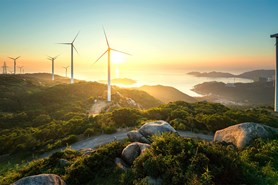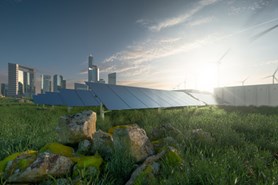The mix of energy supply is a key determinant in hitting net zero and in achieving the targets set by our global leaders on generation and storage.
In November, a panel of experts gathered to address what safe, predictable energy delivery might look like. Sponsored by Gleeds and chaired by Building’s special projects editor, Jordan Marshall, the panel saw discussion of not only the opportunities and the usual challenges (time, risk and cost, including supply chain issues and resource capacity) but also the likelihood of project successes, links to emerging technologies, policy requirements and the skills needed to deliver on UK and global commitments.
Declan Burke, director of nuclear projects and development at the Department for Business, Energy and Industrial Strategy (BEIS), kicked off the discussion, saying: “Stable, resilient energy is the backbone of an economy.” He added that the war in Ukraine has brought energy resilience to the forefront, especially the fact that around 80% of our primary energy use comes from fossil fuels. He summed it up: “There’s a lot to do.”
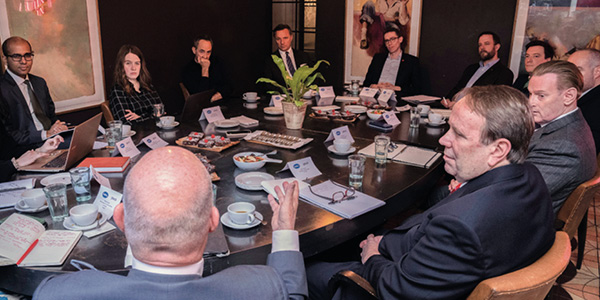
Right (from far left, clockwise around the table): Shekhar Sumit, Jordan Marshall, Joe Seifert, Graham Harle, Declan Burke, Gavin Dobbing, Alastair Evans, Andy Ellis, Tom Samson and Rob Falconer
Communication over conflict
For Gavin Dobbing, project director at Gleeds, one of the big challenges is balancing the conflict between the global benefits of less carbon and the local impacts of construction projects. “There are people who want the benefits of 21st-century energy infrastructure; they want low carbon, but would like all the impact to be somewhere else,” he said.
Exacerbating the major energy challenges are wider issues of communication between providers and users. Graham Harle, chief executive officer at Gleeds, said: “If you ask the general public what the supply of energy will look like in 15 years, they don’t know.” With growing fears of energy blackouts this winter, communication is key. What’s needed is a strategy that all the industry players can buy into and take to the local community.
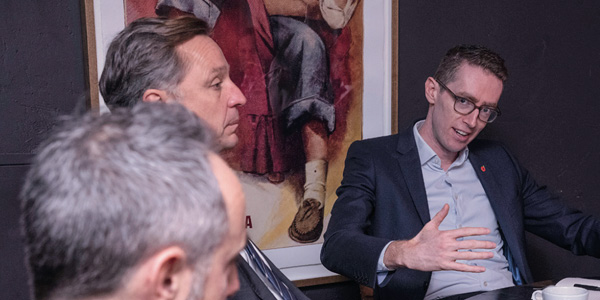
Joe Seifert, Graham Harle and Declan Burke
“It’s a nuanced aspect in terms of engaging with the local community,” added Shekhar Sumit, head of energy transition at Sizewell C. The 3.2MW nuclear power station on the Suffolk coast was given the green light in the autumn statement and will be built next to Sizewell B. “Hoping to form a replica of Somerset’s Hinkley Point C, the team will take the lessons learnt and apply them in the pursuit of reliable, low carbon electricity for another 6 million of the country’s homes.”
“There are concerns,” continued Sumit. “And that needs to be addressed. But there is also lots of recognition for the positives that projects bring to the area.”
Andy Ellis, regional director and head of energy at Gleeds, expanded further, saying that confidence levels – whether it be from investors, government, the industry or society as a whole – are a challenge. He said: “Secondly, it’s about capacity. Confidence and capacity. Do we have the right resources? Do we have the right digital tools? Do we have the right people?”
Going nuclear
Tom Samson, chief executive officer at Rolls-Royce SMR, argued that the way to make a difference is with nuclear power. He said: “Nuclear power today is about 10% of the world’s electricity but it actually contributes around 40% of global clean energy production. If we want to make a real impact, we need to find ways of making nuclear much more achievable and attainable.”
Samson believes the challenge in the UK is “unlocking the great potential that nuclear has by finding ways to make decisions.” With the world’s energy still 85% dependent on fossil fuels, despite all the work already done, delaying decision-making will only exacerbate the issue.
“There is so much value that nuclear can bring to the wider energy system,” said SZC’s Sumit.“One challenge is having the necessary supply chain, skills, experience and knowledge to drive projects forward.” BEIS’s Burke expanded: “Nuclear is something that the UK is good at and we’re excited to do more of it.”
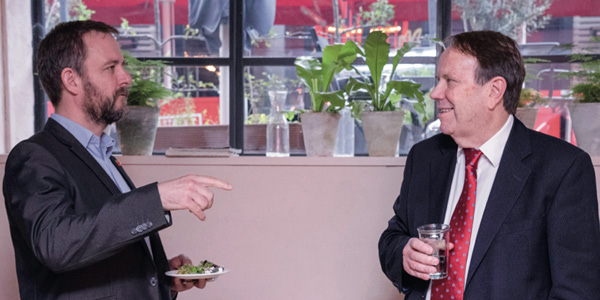
Gavin Dobbing and Rob Falconer
“There are many things that the solar industry can do when given the right circumstances,” said Rob Falconer, manager for solar energy at Parabel. Originally a German company, the team have developed and built several solar plants in the UK. Falconer professed solar to be the “mature” technology around the table and said that “it’s the quickest to market”.
He added: “The grid is gridlocked, and that will now apply to small nuclear as well as everybody else. And that needs to be addressed. The big challenge is: what’s going to happen with the grid?"
What about hydrogen?
Joe Seifert, chief executive officer at Vertex Hydrogen, said: “The UK is frankly very advanced [on hydrogen].” Vertex Hydrogen is designing, developing and building the UK’s first low carbon hydrogen production plant, potentially the first low carbon hydrogen project in the world.
The government’s plan for industrial decarbonisation, is initially built around two clusters – HyNet North West and the East Coast Cluster. The goal is to provide infrastructure to capture, transport and lock away carbon dioxide emissions from industry. Seifert added: “Blue and green hydrogen production facilities will be supported by hydrogen transportation and storage infrastructure – this requires scale to be efficient.”
Policy priorities
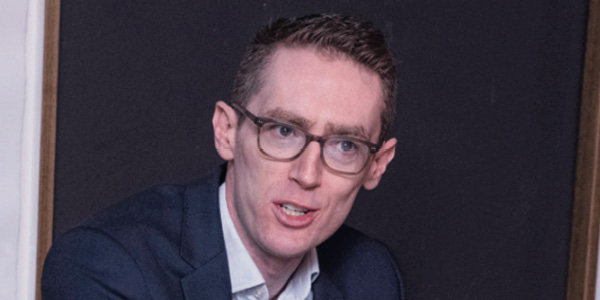
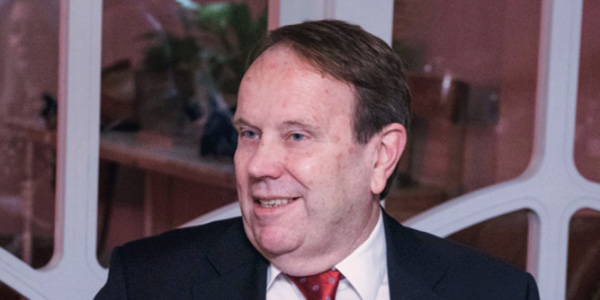
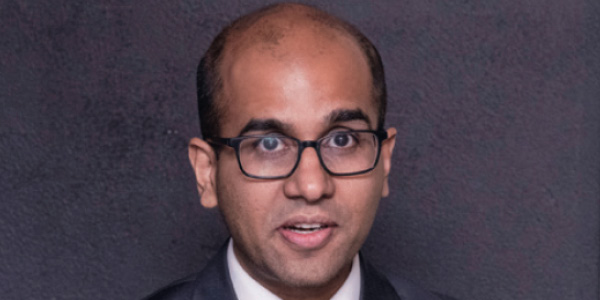

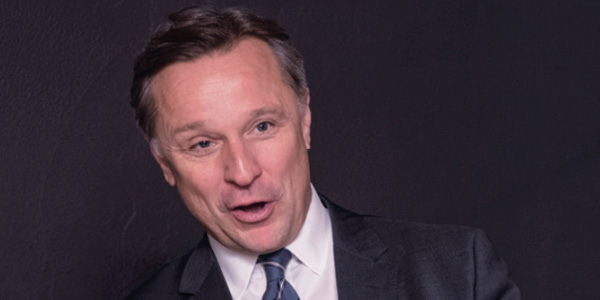
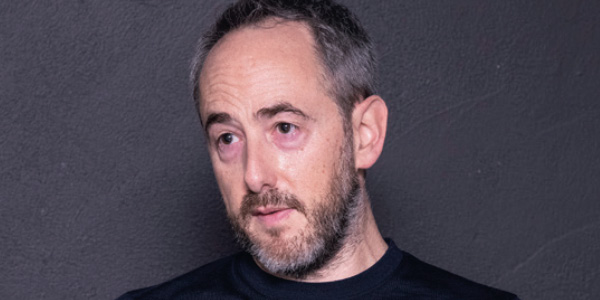
Clockwise from top left: Declan Burke, Rob Falconer, Shekhar Sumit, Joe Seifert. Graham Harle and Gavin Dobbin
All the panellists agreed that a clear policy is fundamental. “We need a clear strategy, led by the government, that we can all get behind,” argued Gleeds’ Ellis. “Getting those decisions is key to getting confidence across the industry and getting the right funding in place to allow supply chains to go and invest.”
Talking about the Nuclear Energy (Financing) Act 2022, passed last year, SZC’s Sumit said: “Decisions such as those create a strong signal to the market, which is incredibly helpful when trying to meet these challenges.”
Flexibility should also be included in the regulatory models that the industry works with, argued Sumit. Making policy work now but also ensuring that it is “workable in the future”.
“Government policy is very reasonable with regard to hydrogen,” claimed Vertex Hydrogen’s Seifert. “Key is making sure the pace of implementation is fast enough and a balancing between evaluating the detail at every turn versus sometimes just getting on with delivery.”
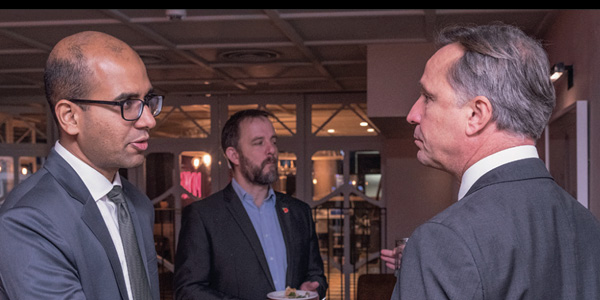
Shekhar Sumit, Gavin Dobbing and Graham Harle
Rolls-Royce SMR’s Samson echoed this: “We need everything we’re talking about around this table if we’re going to have any chance of trying to address climate change.” He went on: “We’ve got to hope the political leadership will embrace these and turn that rhetoric into action as quickly as possible.”
“There is an urgency,” agreed BEIS’s Burke. “Also very important for us is understanding where the private sector is innovating, taking risks and backing projects. It’s key for industry and investors as well.”
Samson highlighted that with massive volumes of offshore wind and policy momentum building around nuclear, “we’re in a privileged position in the UK”. He added: “But there is no point in us just solving it in the UK if the rest of the world isn’t making progress. We need to find solutions that we can export.”
Unicorns in the room
“Taking natural gas and making hydrogen with it is much more expensive than just burning natural gas,” stated Seifert. “We know how to do nuclear, we know how to do offshore wind, and we know how to build solar panels. Even hydrogen is not new or complicated technology. Obviously the key is the overall cost of these low carbon fuels and who is going to pay for those costs.”
Dobbing said: “Quite a lot of weight is placed in public debate on things that don’t yet exist or the concept that somebody else will deal with it.” He went on: “Renewable power coupled with very large inter-seasonal storage – that would be wonderful but it doesn’t actually exist. Yet somehow, these things become quite important in public debate around energy. Why not have a system with unicorns running on treadmills to generate power?”
“It’s that mentality,” agreed Alastair Evans, director of corporate and government affairs at Rolls-Royce SMR. “The easiest investment to make is not to make one. There are groups who don’t want to take a risk, and any investment is a risk.” Evans continued: “It’s a huge programme of investment that is needed to deliver the low carbon world we need, and that’s a hard thing to go out and pitch.”
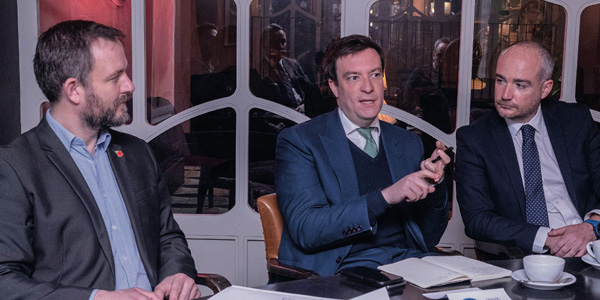
Gavin Dobbing, Alastair Evans and Andy Ellis
Green skills
“Green skills are an important part of the conversation,” Seifert said. On solar, Parabel’s Falconer added: “Many of us used labour from eastern Europe. That labour was extremely talented, worked well and delivered projects in months. That’s all gone.”
“The movement of labour in construction hasn’t always been one way,” said Dobbing. “But I agree the skills conversation is a challenging one. You need to have a career path, not a project.”
“Attracting young people who are passionate and switched on to sustainability is key,” said Harle. “We’ve got to be more diverse and inclusive … and we need to start engaging earlier to plant the seed too.”
Evans noted: “Until people leaving school can see an opportunity for a significant career in construction, they’re not going to join. It is a real problem. But graduates are intelligent; they will see that there is a career for 20 to 30 years at least.”
“Desire and excitement to get into this industry is massive,” argued Seifert. “But investing in the skills force without the commitment and visibility is difficult.”
In Sumit’s view, “nuclear working with solar or wind to produce hydrogen – that whole-system approach – will be something that is needed as we move forward”.
And Evans concluded: “The big thing for me is that we’re not in competition; we need to deliver every one of the technologies represented around this table.”
Sumit added: “Nuclear working with solar or wind to produce hydrogen, that whole system approach, will be something that is needed as we move forward.”
ROUND THE TABLE
- Chair: Jordan Marshall, Special Projects Editor, Building
- Declan Burke, Director of Nuclear Projects and Development, BEIS
- Gavin Dobbing, Project Director, Gleeds
- Andy Ellis, Regional Director and Head of Energy, Gleeds
- Alastair Evans, Director of Corporate and Government Affairs, Rolls-Royce SMR
- Rob Falconer, Manager for Solar Energy, Parabel
- Graham Harle, Chief Executive Officer, Gleeds
- Tom Samson, Chief Executive Officer, Rolls-Royce SMR
- Joe Seifert, Chief Executive Officer, Vertex Hydrogen
- Shekhar Sumit, Head of Energy Transition, Sizewell C
First published in Building on 20.01.2023
Hollie Tye, Building Magazine
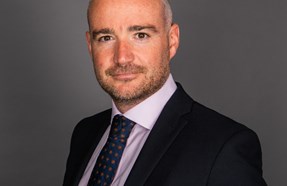
Andy Ellis
